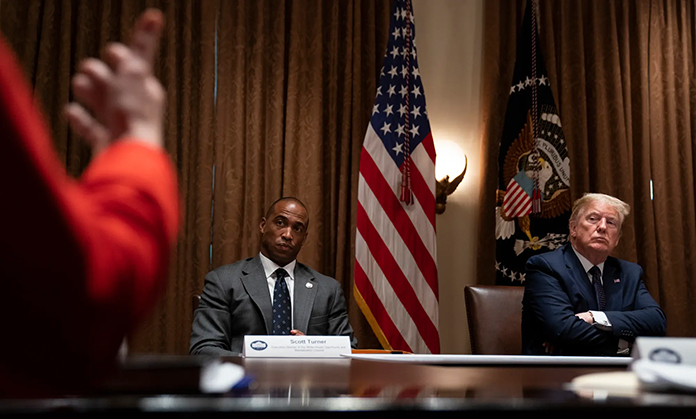Being respectful doesn’t just benefit you, though, it benefits everyone around you. In a study of nearly 20,000 employees around the world, I found that when it comes to garnering commitment and engagement from employees, there’s one thing that leaders need to demonstrate: respect. No other leadership behavior had a bigger effect on employees across the outcomes we measured. Being treated with respect was more important to employees than recognition and appreciation, communicating an inspiring vision, providing useful feedback—or even opportunities for learning, growth, and development.
However, even when leaders know that showing respect is critical, many struggle to demonstrate it. If you’re one of those leaders, consider the following steps:
Ask for focused feedback on your best behaviors. This technique, originated by researcher Laura Roberts and colleagues, will help you see your most respectful self. Collect feedback via email from about 10 people (coworkers, friends, family). Ask each for positive examples of your best behavior. When and how have they seen you treat people well? After compiling the feedback, try to organize the data by summarizing and categorizing it into themes. For example, create a table with columns for commonality, examples (of the behavior), and your thoughts. You might also use Wordle.net to identify themes (you’ll get a colorful picture that can serve as a reminder of you at your best, most civil self). Then, look for patterns. When, where, how, with whom are you at your best? Use your insights to reinforce what you’re doing well. Be mindful of additional opportunities to be your best civil self. Leverage your interpersonal strengths.
Discover your shortcomings. Gather candid feedback from your colleagues and friends not only on what you’re doing that conveys respect, but also on how you can improve. Specifically, what are your shortcomings? Identify a couple of trusted colleagues who have the best intentions for you and your organization. These are folks who you believe will provide direct and honest feedback. Ask for their views about how you treat other people. What do you do well? What could you do better? Listen carefully.
Consider the actions of Lieutenant Christopher Manning, a Naval Intelligence Officer at the Pentagon, who has systematized ways to get continuous feedback from his direct reports. He expanded the scope of anonymous feedback surveys to include not only how he could improve the organization and himself as a leader, but also his team members’ personal happiness (e.g., including how supported people felt by him), and work-life balance. He also instituted an anonymous comment box, and encouraged an open-door policy. He even provides incentives for the most insightful critiques, such as the chance to attend a course or conference of interest, extra time off, public recognition, etc. And he meets one-on-one with his direct reports frequently. The regular feedback from these sources has helped him hone his skills. The bonus: He’s found that those who report to him are more engaged and respect him more.
If you don’t feel comfortable enlisting the feedback of your entire team, you can also ask a trusted direct report to gather feedback within the organization about whether you (the leader) consistently demonstrate civility; and what situations may trigger uncivil behavior.
Work with a coach. Coaches can uncover potential weaknesses through surveying and interviewing those with whom you work, and may shadow you at meetings and events to pick up on subtleties including non-verbal behavior. A skilled coach may unearth some of the underlying assumptions, experiences, and personal qualities that make one prone to uncivil behavior.
Ask, specifically, how you can improve. Once you have clarity on which behaviors you want to improve (first), gather information from others about how best to go about this. This “feedforward” method, originated by author Marshall Goldsmith, is a terrific way to gather specific ideas for improving your behavior. The process:
- Describe your goal clearly and simply to anyone you know.
- Ask for two suggestions. Encourage creative ideas.
- Listen carefully. Write the suggestions down.
- Respond with “thank you.” Nothing more. No excuses or defensiveness.
- Repeat by asking additional people.
Enlist your team in keeping you accountable. Choose one change that could improve your behavior and then experiment, asking your team to help you by letting you know when they see improvement. For example, after a meeting, ask your team if they saw an improvement in the behavior that you’re working on. What was the impact?
Here’s an example of a woman I know of—let’s call her Karen—who enlisted her team to help her change a specific behavior. Karen’s team had grown increasingly frustrated by her inability to listen and empower them. While she was highly intelligent, she was constantly interrupting people in meetings and taking over initial ideas before they could even be presented. Karen worked with a coach to develop a technique to avoid this pattern. (In this case, the technique was tapping her toe instead of interrupting someone. Other coaches have developed similar techniques, such as counting to 10.) She informed her team that she was working on the behavior, and after a couple of days of meetings, she checked in with them on her progress. This helped establish a norm for more of an open dialogue—a spirit that the team could count on each other to support one another’s development.
Make time for reflection. Keep a journal to provide insight into when/where/why you are your best and when you are uncivil. Identify situations that cause you to lose your temper. A leader I worked with named Monica noticed that she was far more curt in the late afternoon. She began her days before 5:00 a.m. By the time late afternoon hit, she was tired, and was less emotionally attuned. She was brusque in conversations and less civil in email. Before she started journaling and reflecting on her day, Monica was unaware of the effect of time of day—and her energy management—on her demeanor. Now, she is much more mindful of her behavior. For challenging situations such as conflict, people that trigger her, and communication that requires tact, she waits until the following morning to respond.
Consider tracking your own energy through the day via this energy audit. Reflection helps you identify strategies to maintain composure and be your best, most civil self. After adopting some of the improvement strategies, do you see a decrease in incivility, or an increase in civility? Track yourself and review progress on a regular basis (e.g., weekly or monthly).
The path toward building greater self-awareness and treating people more respectfully at work doesn’t have to be walked alone. While you’re working to improve your own behavior, encourage your team members to do the same. Have an open discussion with your team about what you and your teammates do or say that conveys respect. How or when are you and your teammates less than civil to each other? What could you do or say better? Discuss what the team will gain by being more respectful of each other. As the entire team develops norms, hold one another accountable for them. Consider yourselves coaches that are helping to improve both individual and team performance.
The key to mastering civility begins with improving your self-awareness. Armed with this information, you can begin tweaking your behavior to enhance your influence and effectiveness. Small acts can have big returns. Your civility will cascade throughout your organization, with benefits to you—and your organization.
Author: Christine Porath is an associate professor at Georgetown University’s McDonough School of Business.
















